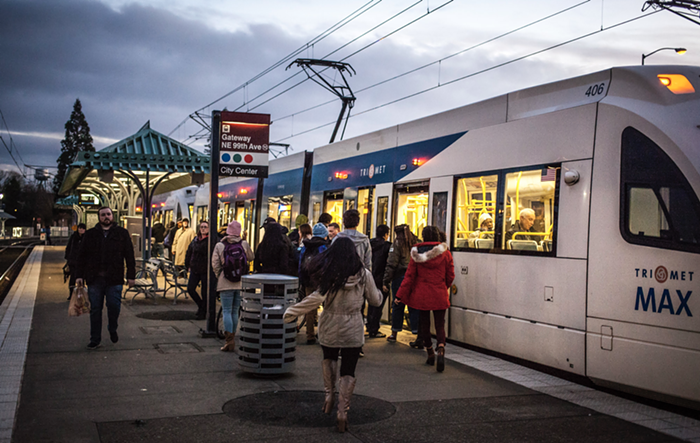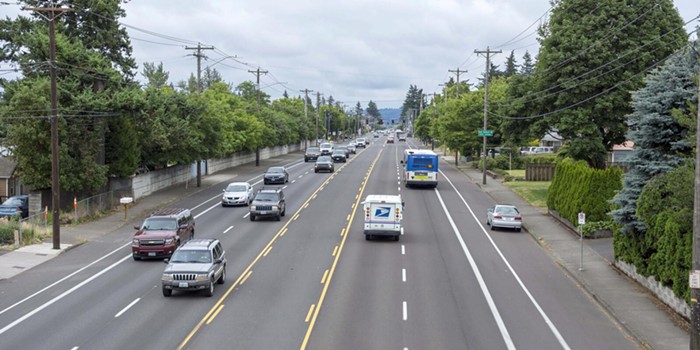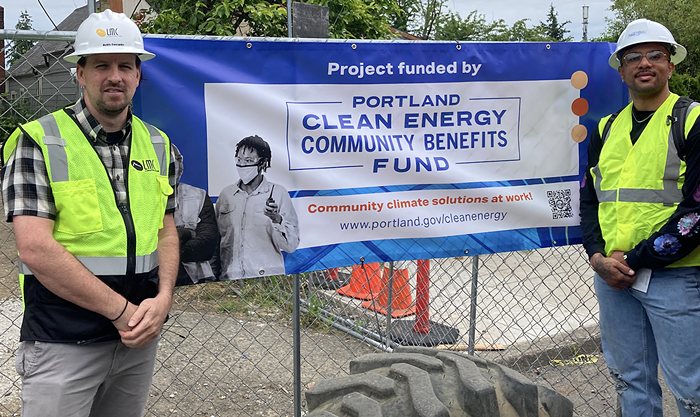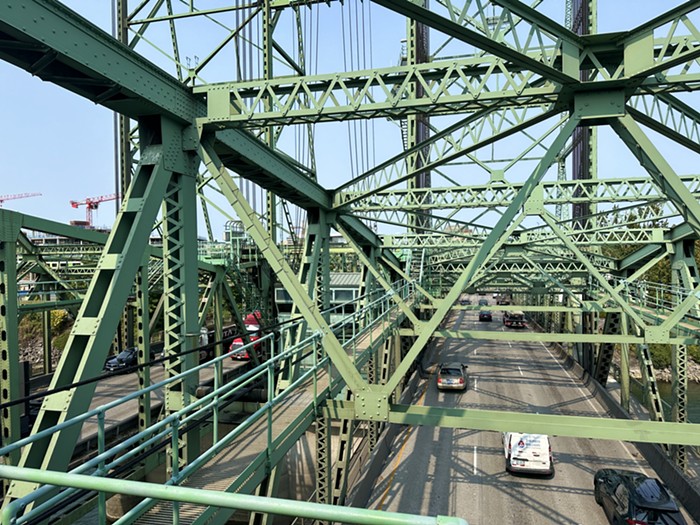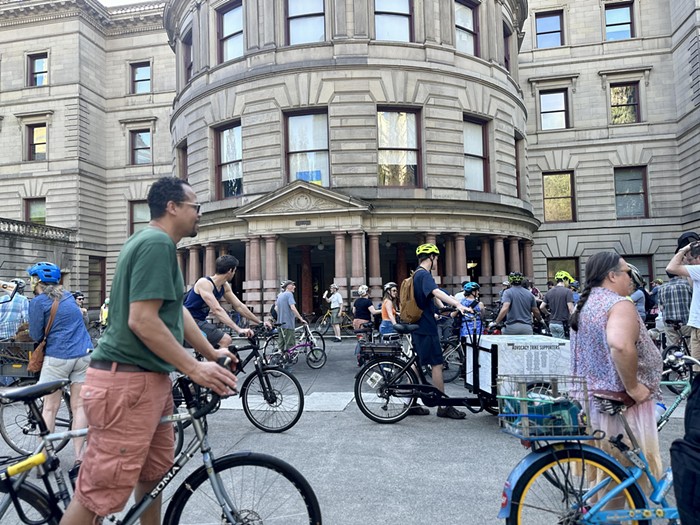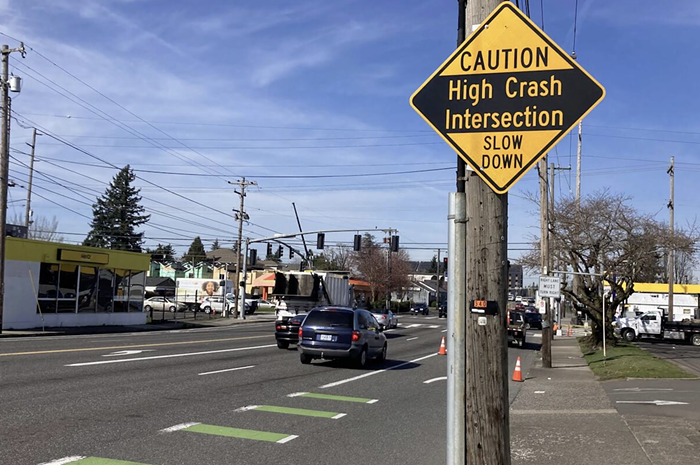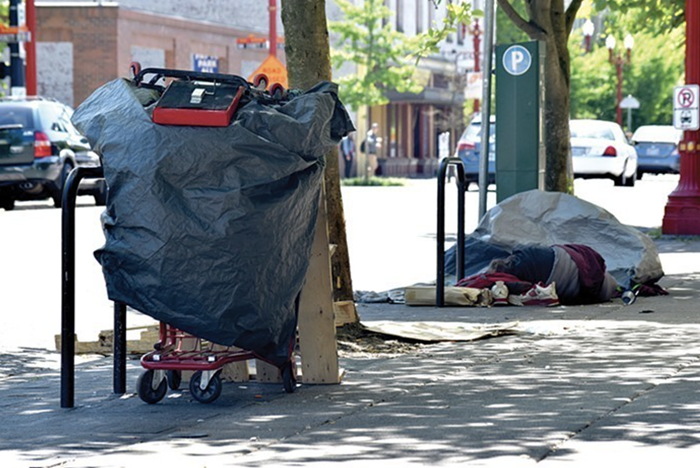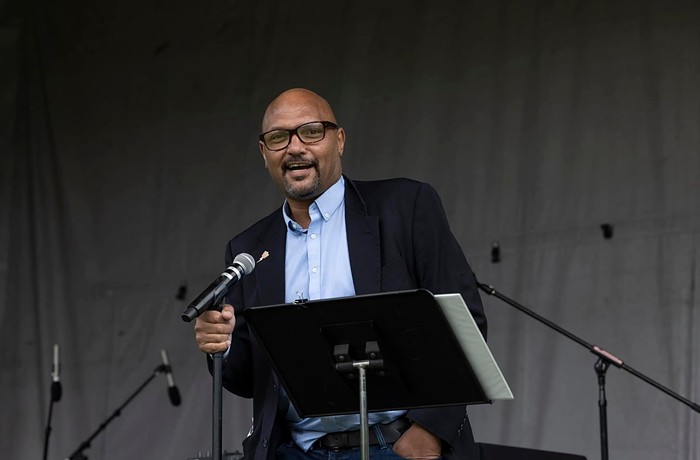I haven't written much about the I-5 interchange plan and you probably haven't heard about it because the process is slow and complicated. But big things are in the work for the one mile area where the I-5 runs through the Rose Quarter and Albina neighborhood.
That stretch of I-5 has the highest crash rate of any part of the I-5 in Oregon: 472 crashes over the past five years. The freeway and its on-and-off ramps also slice the Rose Quarter off from the rest of the city, making it a not-so-great place to live or open a business. In a plan (pdf) put together by the city and Oregon Department of Transportation (ODOT), the state will spend years and $400 million to revamp the freeway and surface streets around the Rose Quarter.
A stakeholder group signed off on moving the I-5 interchange plan forward at a key meeting last Thursday, june 7th, but eight out of 18 representatives expressed some or serious concern about the project. Some area residents are frustrated that the long-needed improvements to the surface streets—like the better bike way, pedestrian bridge, and altered traffic flows—can apparently only come coupled with the freeway widening.
Changes to the area would include:
• Widening roughly one mile of I-5 with an auxiliary on-off lane in both directions and shoulders. (cost: $140-150 million)
• "Capping" the freeway where it runs under the Rose Quarter and Broadway/Weidler, building a street-level lid that could be used for a park or buildings.
• Tearing down and rebuilding four freeway overpasses on NE Broadway, NE Weidler, Williams, and Vancouver. (cost of rebuilding the bridges with the lid: $170-190 million)
• Tearing down the freeway overpass on NE Flint.
• Moving the southbound I-5 onramp north one block (from Winning Way to Weidler/Williams).
• Building a two-way cycletrack on North Williams through the area.
• Building a bike/ped bridge from the Rose Quarter over I-5 to the Lloyd District. (cost: $15-20 million)
That all is hard to visualize, so here's a drawing.
I-5 was built in 1966 and traffic on it has doubled in those years to 120,000 cars a day today. ODOT predicts that the project will reduce crashes on the stretch by 30-50 percent. " Neighborhood leaders say the city and state should find some way to improve the neighborhood streets without widening the freeway.
Eliot Neighborhood Land Use Chair Mike Warwick described that situation as "the devil's bargain." He and two others on the stakeholder committee were critical of spending hundreds of millions of dollars and years of heavy duty construction to add one lane and shoulders to a freeway built less than 50 years ago, but they really want the improved neighborhood street connections that ODOT and the city promise will follow the freeway's widening.
Neighborhood leaders also worry that when the time comes to do the neighborhood improvements, the city and ODOT will cut corners, lose funding, or otherwise fail to follow through on the neighborhood improvement parts of the plan, leaving the area with a wider freeway but none of the surface-street fixes. This neighborhood is no stranger to well-intentioned redevelopment plans gutting the area—they worry this could be a repeat of the original the '60s-era freeway planning, when I-5 was rammed through the majority African-American neighborhood with little concern for the freeway's impact on residents.
"This is maybe the most important thing to happen to Eliot since I-5 went through," Eliot neighborhood chair Allan Rudwick said at the stakeholder meeting last night. "Pushing this forward will delay development in the area for maybe 10 years. Why would we do that to add one auxiliary lane and shoulders to one mile of freeway?"
Long-time activist Jim Howell was more direct. "We have a nickname for this project: CRC Light," he told the committee. "It will require massive demolition and reconstruction. We could use that money to repair miles of crumbling city streets."
For its part, the city and ODOT assured stakeholders last night that the freeway widening and neighborhood street fixes would go hand-in-hand.
"This is considered an extremely significant step forward step from the city and the state," said city planner Paul Smith. "This is one project and it will need to be funded as a single package."
